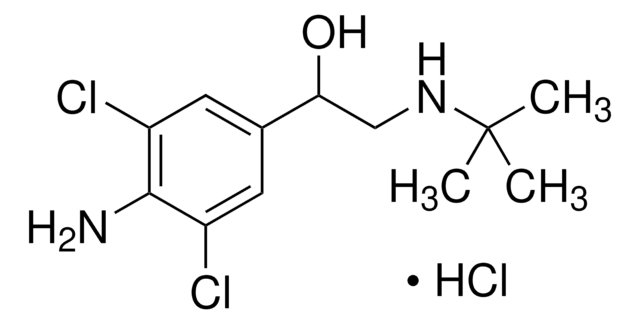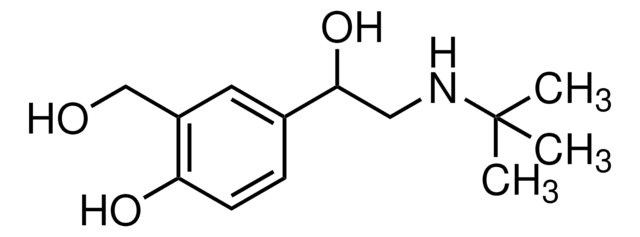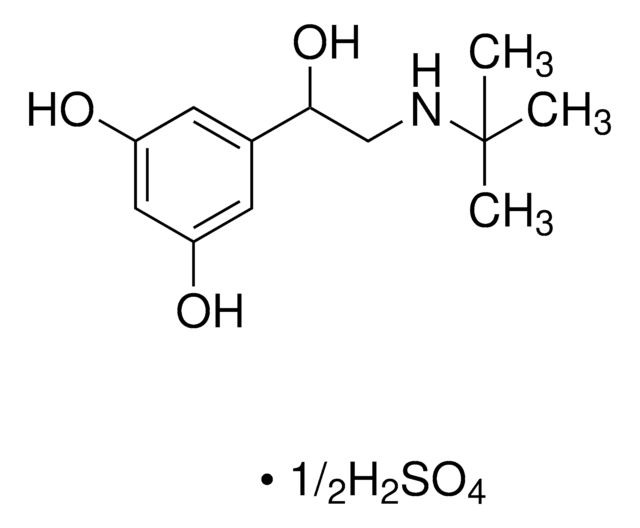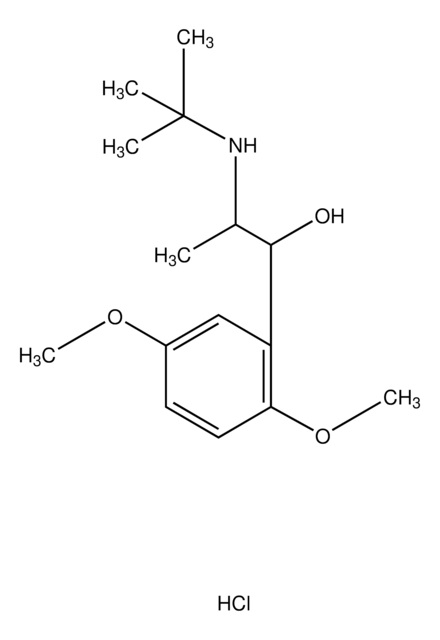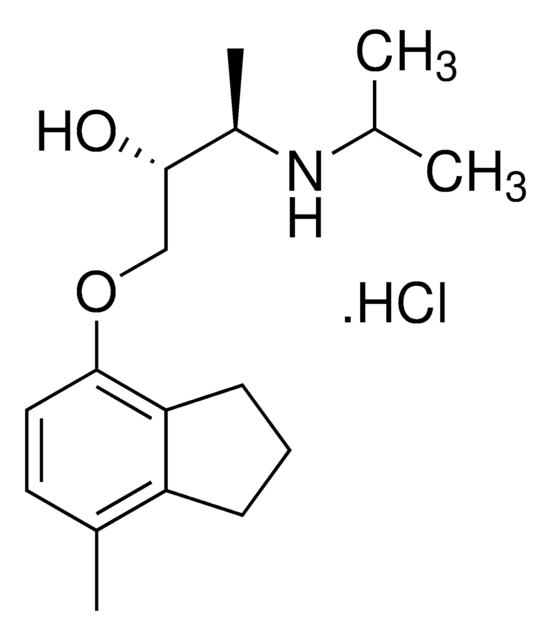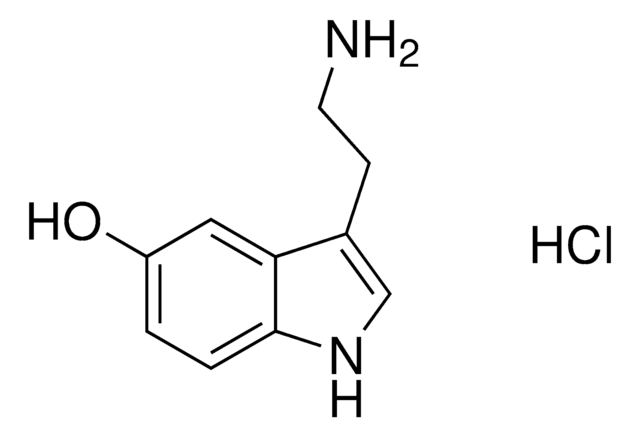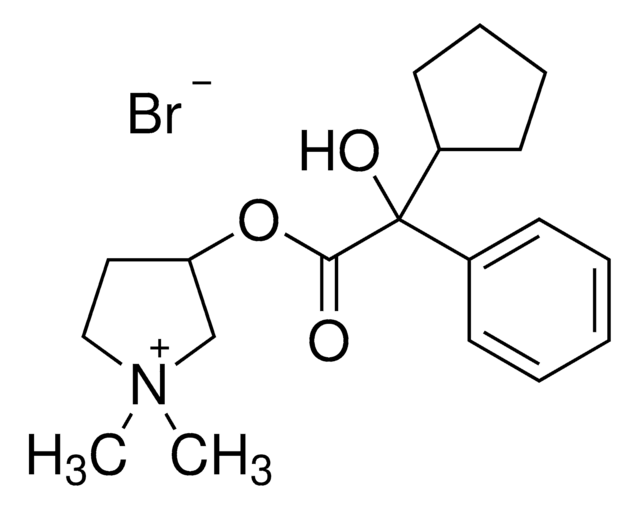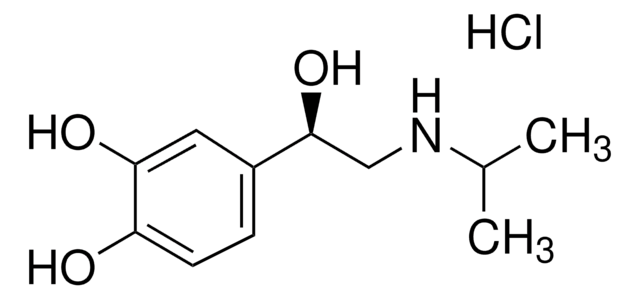F9552
Formoterol fumarate dihydrate
>98% (HPLC)
Synonym(s):
(R*,R*)-N-[2-Hydroxy-5-[1-hydroxy-2-[[2-(4-methoxyphenyl)-1-methylethyl]amino]ethyl]phenyl]formamide fumarate, Formoterol hemifumarate salt monohydrate
About This Item
Recommended Products
Quality Level
assay
>98% (HPLC)
form
solid
color
white to off-white
solubility
DMSO: soluble 20 mg/mL
H2O: insoluble
originator
Novartis
SMILES string
O.O.OC(=O)\C=C\C(O)=O.COc1ccc(C[C@H](C)NC[C@@H](O)c2ccc(O)c(NC=O)c2)cc1.COc3ccc(C[C@H](C)NC[C@@H](O)c4ccc(O)c(NC=O)c4)cc3
InChI
1S/2C19H24N2O4.C4H4O4.2H2O/c2*1-13(9-14-3-6-16(25-2)7-4-14)20-11-19(24)15-5-8-18(23)17(10-15)21-12-22;5-3(6)1-2-4(7)8;;/h2*3-8,10,12-13,19-20,23-24H,9,11H2,1-2H3,(H,21,22);1-2H,(H,5,6)(H,7,8);2*1H2/b;;2-1+;;/t2*13-,19+;;;/m00.../s1
InChI key
RATSWNOMCHFQGJ-TUYNVFRMSA-N
Gene Information
human ... ADRB2(154)
Looking for similar products? Visit Product Comparison Guide
Application
- as ß2-adrenergic agonist, to determine whether ß2-adrenergic receptor signaling was sufficient to induce up-regulation of select gene transcripts
- as a ß2-adrenergic receptor agonist and a long term bronchodilator
- as ß2-adrenergic receptor (ß2AR) agonist to recover renal function in ischemia-reperfusion injury (IRI) in mice
Biochem/physiol Actions
Features and Benefits
signalword
Danger
Hazard Classifications
Acute Tox. 4 Inhalation - Aquatic Chronic 3 - Repr. 2 - STOT RE 2 - STOT SE 1
Storage Class
6.1C - Combustible, acute toxic Cat.3 / toxic compounds or compounds which causing chronic effects
wgk_germany
WGK 3
flash_point_f
Not applicable
flash_point_c
Not applicable
ppe
Eyeshields, Gloves, type N95 (US)
Certificates of Analysis (COA)
Search for Certificates of Analysis (COA) by entering the products Lot/Batch Number. Lot and Batch Numbers can be found on a product’s label following the words ‘Lot’ or ‘Batch’.
Already Own This Product?
Find documentation for the products that you have recently purchased in the Document Library.
Customers Also Viewed
Our team of scientists has experience in all areas of research including Life Science, Material Science, Chemical Synthesis, Chromatography, Analytical and many others.
Contact Technical Service